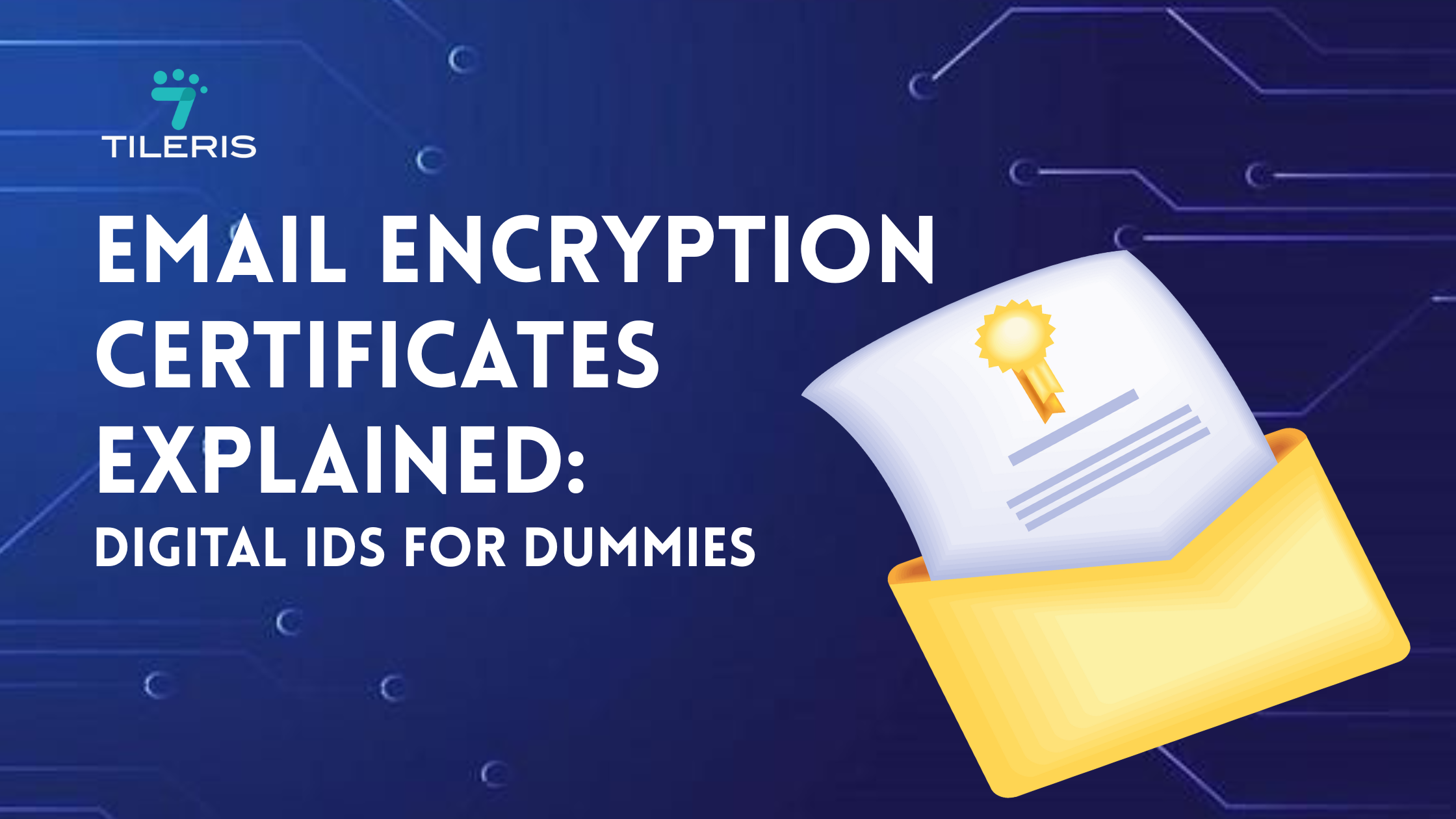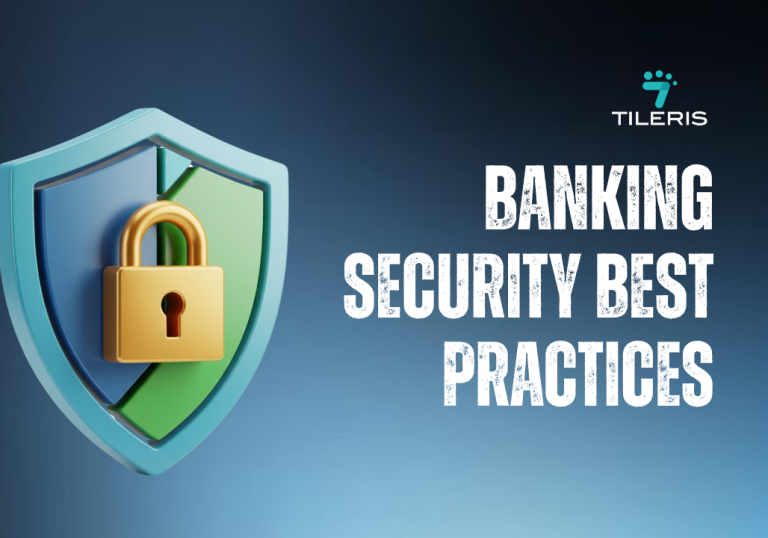Email Encryption Certificates Explained: Digital IDs For Dummies
Introduction
Every day, billions of emails traverse the internet carrying sensitive information, financial data, personal conversations, business secrets, and confidential documents. Yet most of these messages travel completely unprotected, like postcards that anyone can read along the way and roadside. Email encryption certificates solve this fundamental security problem by creating a digital identity system that ensures your messages remain private and authentic.
Think of email encryption certificates as sophisticated digital passports for your email communications. Just as a passport proves your identity when crossing borders, these certificates verify who you are in the digital space while simultaneously protecting your message content from prying eyes.
Email Encryption Certificates
Email encryption certificates, also known as S/MIME certificates or digital IDs, contain several critical components that work together to secure your communications and ensure you are protected. At their core, these certificates include a public key, a private key, and metadata that identifies the certificate holder.
The public key cryptography system forms the foundation of email encryption. When someone wants to send you an encrypted email, they use your public key (which is freely available) to encrypt the message. Only you can decrypt it using your corresponding private key, which remains securely stored on your device. This asymmetric encryption ensures that even if intercepted, your emails remain unreadable to unauthorized parties.
The certificate also contains digital signatures that verify the message’s integrity and authenticity. When you digitally sign an email, recipients can confirm that the message truly came from you and hasn’t been tampered with during transmission. This non-repudiation feature is crucial for legal and business communications where message authenticity is paramount.
Certificate Authorities
Certificate authorities (CAs) serve as the digital trust guardians and backbone of the email encryption ecosystem. These trusted third-party organizations validate identities and issue digital certificates, much like government agencies issue driver’s licenses or passports. When a Certificate authority issues you an email encryption certificate, they’re vouching for your identity and creating a digital trust relationship.
Major certificate authorities include Comodo, DigiCert, GlobalSign, and Sectigo, each maintaining rigorous validation processes before issuing certificates. The validation levels vary significantly depending on the certificate type. Domain Validated (DV) certificates require only proof of email address ownership, while Organization Validated (OV) certificates demand verification of organizational identity. Extended Validation (EV) certificates require the most stringent identity verification, including legal entity verification and physical address confirmation.
The role of certificate authorities extends beyond simple issuance. They maintain Certificate Revocation Lists (CRLs) and operate Online Certificate Status Protocol (OCSP) services to inform systems when certificates become compromised or invalid. This real-time validation ensures that the trust infrastructure remains secure even when individual certificates are compromised.
Trust Chains/Certificate chain
Trust chains, also called certificate chains or certification paths, create a hierarchical system of trust that allows your email client to verify certificate authenticity and build digital confidence networks. Understanding trust chains is crucial for managing email encryption certificates effectively.
At the top of every trust chain sits a root certificate authority, whose certificate is pre-installed in operating systems and email clients. These root CAs are implicitly trusted by your system. Below the root CA are intermediate certificate authorities, which act as trusted delegates that can issue certificates on behalf of the root CA. Your email encryption certificate sits at the bottom of this chain, deriving its trustworthiness from the intermediate CA, which in turn derives trust from the root CA.
When your email client receives an encrypted message, it follows the trust chain upward, verifying each certificate’s digital signature until it reaches a trusted root certificate. If any link in this chain is broken – perhaps due to an expired intermediate certificate or a revoked CA certificate—the entire trust relationship fails, and your email client will display security warnings.
Certificate pinning represents an advanced trust chain concept where applications or email clients are configured to only trust specific certificates or certificate authorities for particular domains. This technique prevents man-in-the-middle attacks even if a certificate authority is compromised, though it requires careful management to avoid service disruptions.
Expiration Management: The Ticking Clock of Digital Trust
Email encryption certificates have limited lifespans, typically ranging from one to three years, creating ongoing management challenges that organizations must address proactively. Certificate expiration is a security feature, not a bug – it limits the window of vulnerability if a certificate’s private key becomes compromised and ensures that identity validation remains current.
The certificate lifecycle begins with initial issuance and includes several critical phases. During the active period, certificates function normally for encryption and digital signing. As expiration approaches, typically 30-90 days before the deadline, certificate management systems should begin renewal processes. The renewal window allows for smooth transitions without service interruptions.
Effective expiration management requires establishing automated monitoring systems that track certificate expiration dates across your organization. These systems should generate alerts at multiple intervals – perhaps 90, 60, 30, and 7 days before expiration – allowing adequate time for renewal and deployment. Many organizations use certificate management platforms like Venafi, AppViewX, or built-in tools from their certificate authorities to automate these processes.
The consequences of certificate expiration extend beyond simple inconvenience. Expired certificates prevent users from sending encrypted emails, break digital signature verification, and can cause email clients to display alarming security warnings. In business environments, expired certificates can halt critical communications and damage professional relationships.
Certificate renewal involves several technical considerations. While the certificate authority validates that you still control the email address or domain, you must decide whether to generate new key pairs or reuse existing ones. Security best practices generally recommend generating fresh key pairs during renewal to ensure forward secrecy – the principle that past communications remain secure even if current keys are compromised.
Optimizing for Maximum Impact Encryption certificates
Successfully deploying email encryption certificates requires careful planning and ongoing management. Organizations should begin by conducting a comprehensive inventory of all email addresses requiring certificates, considering both individual users and shared email accounts like support@ or info@.
Certificate deployment varies significantly between email clients. Microsoft Outlook requires importing certificates into the Windows certificate store, while Mozilla Thunderbird maintains its own certificate database. Mobile email clients often have limited S/MIME support, requiring additional configuration or third-party applications. This fragmentation means organizations must develop platform-specific deployment guides and provide comprehensive user training.
Key escrow and backup strategies are critical considerations often overlooked during initial deployment. If users lose access to their private keys; due to hardware failure, device replacement, or forgotten passwords, they cannot decrypt previously received encrypted emails. Organizations must balance security requirements with business continuity needs, potentially implementing corporate key recovery systems while maintaining individual privacy.
Testing encrypted email communications before full deployment prevents embarrassing failures during critical moments. This testing should include certificate chain validation, cross-platform compatibility verification, and emergency recovery procedures. Organizations should also establish clear policies regarding certificate usage, including mandatory encryption for sensitive communications and guidelines for handling certificate-related security warnings.
Advanced Considerations and Future Developments for Email Encrytion certificates
The email encryption landscape continues evolving with emerging technologies and changing security requirements. Perfect Forward Secrecy (PFS) implementations are becoming more common, ensuring that even if long-term certificate keys are compromised, individual email sessions remain secure. This advancement requires more frequent key exchanges and sophisticated key management systems.
Quantum computing represents both a threat and an opportunity for email encryption certificates. Current RSA and ECC cryptographic algorithms that protect today’s certificates will become vulnerable to quantum attacks, driving development of post-quantum cryptographic algorithms. Organizations should begin planning for this transition, considering how quantum-resistant certificates will integrate with existing email infrastructure.
Certificate Transparency (CT) logs provide public audit trails of certificate issuance, helping detect fraudulent certificates issued for your domains. While primarily used for web certificates, CT concepts are beginning to influence email certificate management, providing additional layers of verification and accountability.
Conclusion
Email encryption certificates represent a mature technology that provides essential security for digital communications. While implementation requires technical expertise and ongoing management, the protection they provide for sensitive information makes them indispensable for modern organizations.
Understanding certificate authorities, trust chains, and expiration management enables informed decision-making about email security investments. As cyber threats continue evolving and regulatory requirements become more stringent, email encryption certificates will remain a cornerstone of comprehensive information security strategies. The key to successful email encryption certificate deployment lies in treating them not as one-time implementations but as ongoing security processes requiring continuous attention, regular updates, and proactive management. Organizations that invest in proper certificate management infrastructure and user education will reap the benefits of secure, authenticated email communications while avoiding the pitfalls of expired certificates and trust chain failures
To take your cybersecurity to the next level, proceed to downloading our free security checklist, it’s packed with simple steps to help you stay protected online. And for more contents like this just head over to tileris.com.
If you’re looking for more hands-on support or more cyber security contents like this contact us, you can also request a free consultation with our AI agents, our experts are ready to guide you. Or, if you’d rather see how Tileris works in real time, go ahead and request a demo through our contact form.






